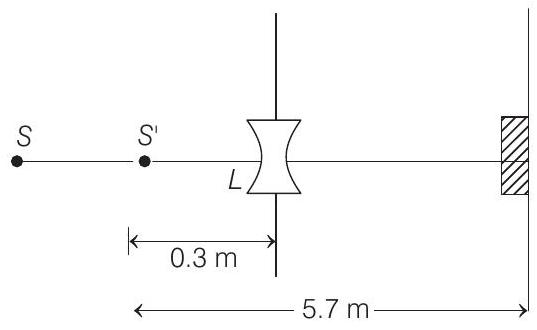Modern Physics 7 Question 49
55. A monochromatic point source
 screen. The efficiency of the detector for the photoelectron generation per incident photon is 0.9 .
screen. The efficiency of the detector for the photoelectron generation per incident photon is 0.9 .
(a) Calculate the photon flux at the centre of the screen and the photocurrent in the detector.
(b) If the concave lens
(c) If the work function of the photoemissive surface is
Show Answer
Solution:
- (a) Energy of one photon,
Power of the source is
At distance
Area of aperture is,
The aperture will become new source of light.
Now, these photons are further distributed in all directions. Hence, at the location of detector, photons incident per unit area per unit time
This is the photon flux at the centre of the screen. Area of detector is
The efficiency of photoelectron generation is 0.9 . Hence, total photoelectrons generated per unit time
or, photocurrent in the detector
(b) Using the lens formula :
i.e. image of source (say

Total number of photons incident per unit time on the lens are still
This is the photon flux at the detector
New, value of photocurrent is
(c) Energy of incident photons (in both the cases) :
Work function
or the stopping potential will be






